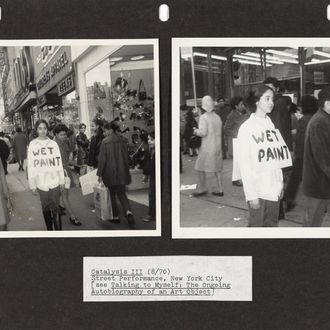
Conceptual artist Adrian Piper spent the last 60 years of her career challenging social norms through her work. In 1970, a 22-year-old Piper slathered the words “WET PAINT” onto a sheet of paper and wrapped it around her white shirt and baggy jeans. Dressed in her makeshift costume, she stood on a New York City street as passers-by reacted. This scene became the subject of Catalysis III, one of Piper’s best-known photographic series. Piper has since produced hundreds of paintings, drawings, photographs, and multimedia works exploring preconceptions of race and gender and addressing themes like xenophobia and social engagement.
This Saturday, more than 290 of Piper’s works will go on display at the MoMA in “Adrian Piper: A Synthesis of Intuitions, 1965–2016.” The show, which required about three years of preparation on behalf of its curators, is a rare opportunity for viewers to see the evolution of her work over time. Ahead of the show, the chief co-curator of the show, Christophe Cherix, shared his opinions of the messages behind six of the works that will be on view at the MoMA.
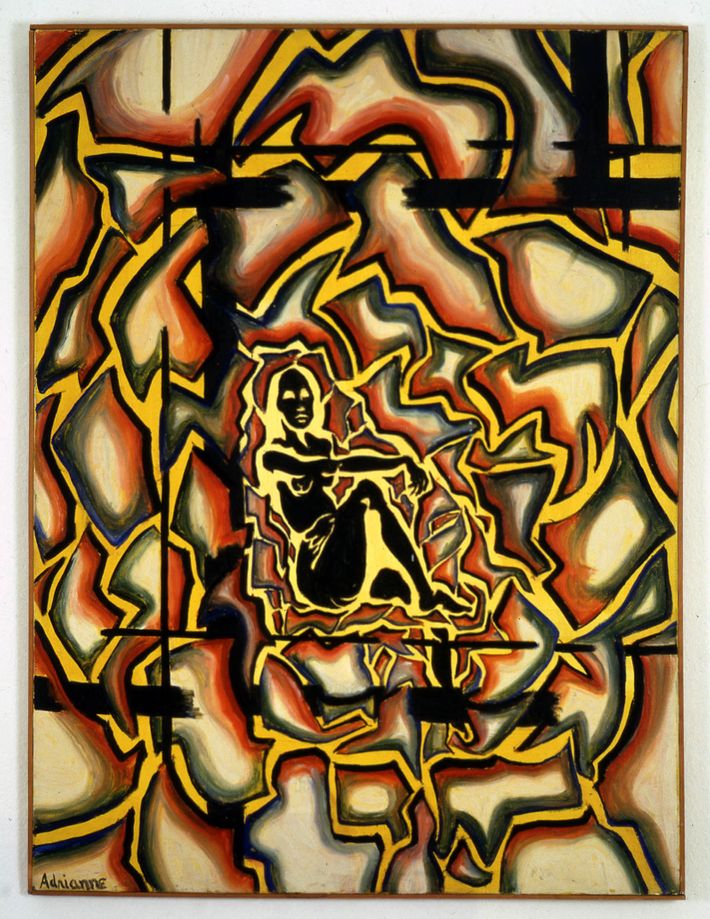
“This portrait really relates to LSD and the idea that you’ve created a prism to see the world around you, but also a form of structure that can be imposed on your own perception of reality.”
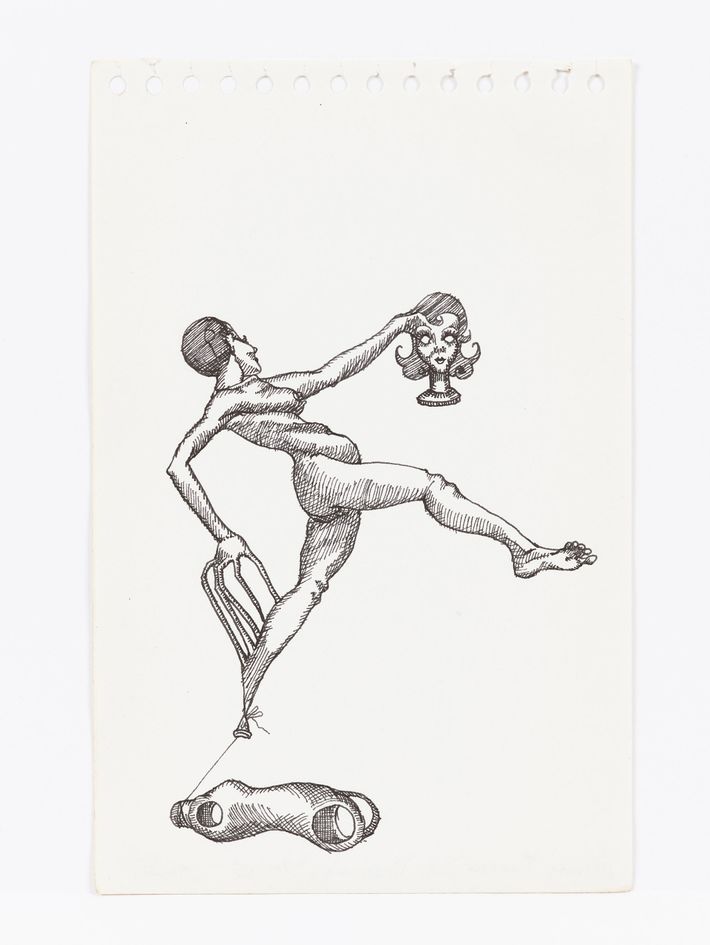
“She’s thinking about childhood and how childhood shapes the way we perceive the society around us. She’s an African-American artist, and a lot of the dolls that are commonly available are white. It’s also about … taking that, and trying to reshape it, so she’s working in relation to the human figure, but also a certain representation of the body.”
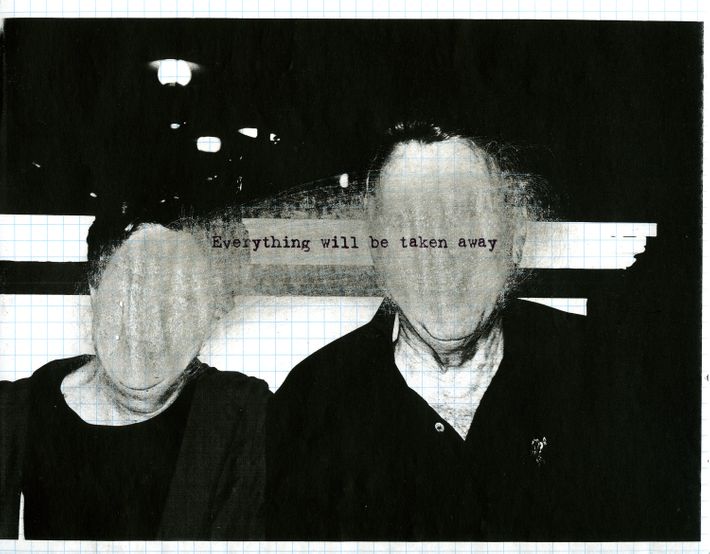
“It’s about trying to bring you back to what makes you a human being. At some point, you’re going to disappear, and literally everything will be taken away. So the work has this way of making you think about your identity as a human being, to really go to the core of your persona.”

“She talks about the confusion that people have while interacting with her — not knowing if she’s white or African-American. So she’s pushing into a [new] direction by altering her face, to say, ‘What do people think a black person represents? What does it mean when they don’t conform to that preconception?’”

“You enter a room and you have four photographs. In the room, there is also a soundtrack. You will hear the artist take on the persona of the viewer. You have to spend time and listen to the artist embodying this person that could be you.”
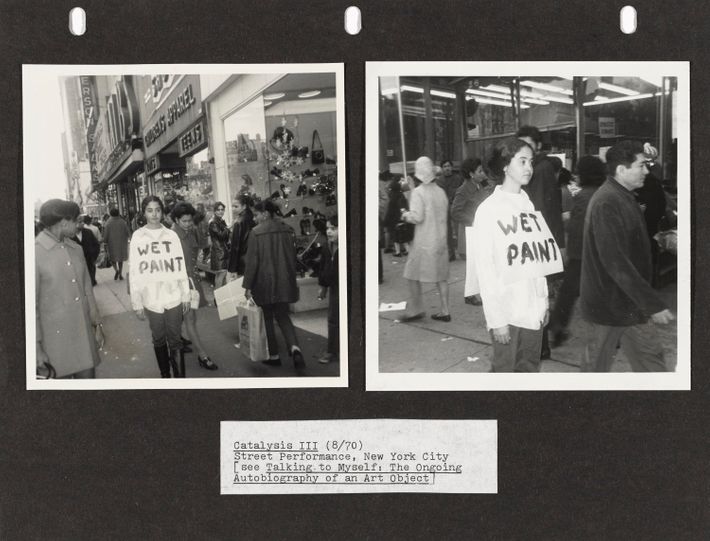
“Wet paint is something you don’t touch, so she’s trying to pause in the street and ask the passers-by to think about how we relate to each others’ bodies — ‘Does this feel like something that forbids you from interacting more closely with the performer?’”
“Adrian Piper: A Synthesis of Intuitions, 1965–2016” will be on display at the MoMA until July 22. This interview has been edited and condensed for clarity.